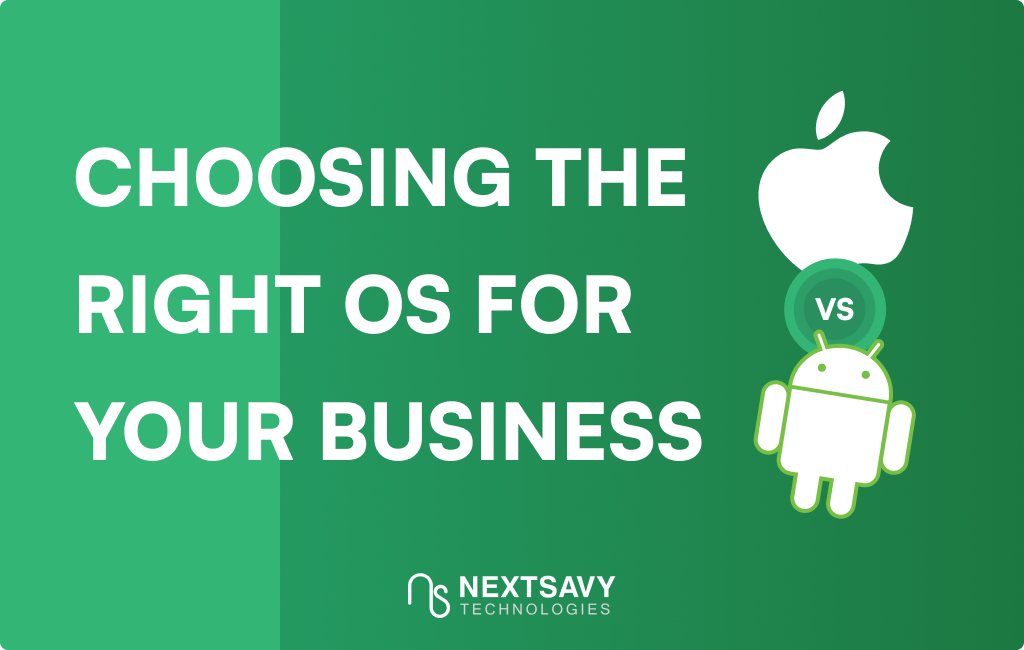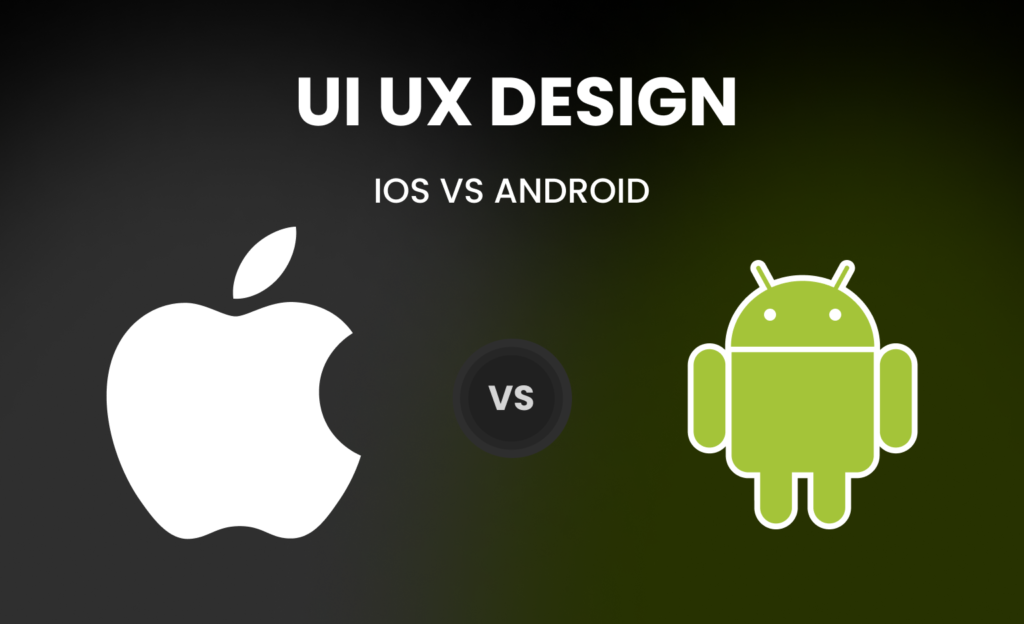June 9, 2023
 The Benefits of Cross – Platform Development for iOS and Android
The Benefits of Cross – Platform Development for iOS and Android

Introduction
Client: I would like to make a mobile application. But which platform should I opt for? Which is better, an Android app or an iOS app? Should I opt for cross-platform application?
Don’t worry, you’re not alone. This was a phase that everyone went through. The most crucial aspect is to obtain sufficient knowledge before making any decisions that may have an impact on your business product.
Cross-platform applications allow businesses to earn revenue from both the Google Play Store (Android) and the Apple App Store (iOS), allowing them to increase sales in an increasingly competitive industry.
We at Nextsavy Technologies have spent almost a decade helping businesses effectively launch cross-platform mobile applications while also providing comprehensive knowledge about the benefits of deploying cross-platform apps. Let us examine them in chronological order.
Benefits of deploying cross-platform applications
1. One – source code
Benefit
It saves time and resources, as developers only need to write and maintain one codebase. It also ensures consistency across different platforms, reducing the risk of errors and inconsistencies. One – source code allows for easier updates and modifications, as changes can be made to the single codebase and applied to both platforms simultaneously.
Overall, cross-platform application for multiple platforms using a single codebase is a highly efficient strategy that provides several advantages such as time and resource savings, reliability, etc.
Drawback
One potential drawback is that certain platform-specific features may not be fully supported or may require additional customization. Additionally, maintaining and updating one source code for multiple platforms can be complex and time-consuming, especially as new updates and features are released.
Also, some argue that developing native apps for each platform can provide a better user experience and take advantage of platform-specific features.
2. No need for separate teams
Benefit
In cross-application development, there is no need for separate teams. With the advancement of modern technology, it is now easier than ever to create cross-platform applications that can run on a variety of devices and operating systems. This reduces the need for developers to organize different teams for each platform they wish to target, saving time and resources in the process.
This, in turn, means that developers can address issues quickly and add new features without having to go through a lengthy approval process for each platform.
Drawback
However, having a dedicated and separate team for each platform can also lead to more specialized knowledge as information, knowledge, and skills are diversified and everyone can come up with different ideas to deal with situations and problems, resulting in a better user experience.
Moreover, having distinct teams for each platform allows for more focused attention on the unique needs and details of each operating system.
For example, a team dedicated solely to developing for iOS, may have a better understanding of the user interface and design components unique to Apple devices. It is important to weigh the benefits and drawbacks of both approaches and determine what will work best for your specific project and team.
3. Easy maintenance and updates
Benefit
Not only creating a functional and user-friendly application is important for developers, but also to regularly update and maintain it to ensure its optimal performance and user satisfaction. The cross-platform application allows developers to efficiently manage and enhance the app’s features across multiple devices and operating systems.
For the consumer, a better experience always wins. Even if you are a big, hyper-funded player, the experience the customer gets at the end of the day is the deciding factor. – Samar Singla, Jugnoo
To stay ahead in the game and deliver the best possible experience for their consumers in today’s competitive industry, developers prioritize ongoing maintenance and upgrades. Users are more likely to interact with an app that performs efficiently and fits their needs, which leads to additional income through in-app purchases or advertising.
Drawback
While ongoing maintenance and upgrades are important, developers must also consider the cost and resources required to maintain a cross-platform program on a regular basis, which may not always be possible for smaller organizations or freelance developers.
Some users may not care about updates or maintenance as long as the software performs its functions, and emphasizing continual maintenance and upgrades may not guarantee success in a competitive sector.
4. Access to a larger audience
The cross-platform application includes iOS and Android functionality, making it more accessible to a wider audience. Businesses can reach larger audiences by developing cross-platform apps that are available on multiple platforms at the same time. This increased reach enhances the opportunity for client acquisition and revenue generation.
In addition, cross-platform applications offer cost savings for businesses as they only need to develop and maintain one codebase instead of separate ones for each platform.
Drawback
“The size of your audience doesn’t matter. What’s important is that your audience is listening.” – Randy Pausch
Make sure you are not targeting an irrelevant audience while opting for a cross-platform application. It is crucial to identify and understand your target audience. This will ensure that you create an app that meets the needs of your intended users and provides a seamless user experience across multiple platforms. Failing to do so might result in poorly received application visitors and a waste of resources. Therefore, take the time to research and analyze your target audience to develop a successful application.
5. Simplified deployment
Cross-platform development simplifies the deployment process. Frameworks such as React Native, Xamarin, and Flutter enable businesses to create mobile apps quickly and effectively. These frameworks offer pre-built components and modules that enable developers to swiftly build and deploy programs across multiple platforms, resulting in a shorter time to market. React Native uses JavaScript to build native apps, Xamarin uses C# to build cross-platform application with native user interfaces, and Flutter uses the Dart programming language for a fast development cycle.
Drawback
While cross-platform development offers benefits such as simplified deployment processes, it can also come with drawbacks such as compatibility issues and limited access to platform-specific features. Ultimately, the decision to pursue cross-platform development should be carefully considered in light of the specific needs and goals of the project. Sometimes native apps fulfill the needs of clients, so there is no need to choose the cross-platform which in turn can also save clients’ time and budget.
For example: a gaming app may require access to specific hardware features such as graphics processing units (GPUs) on different mobile platforms, which can limit the performance of the app if developed using cross-platform tools. In this case, developing native apps for each platform may be a better option, as it allows for optimized performance and access to platform-specific features. This approach may also lead to higher user engagement and satisfaction.
Conclusion
“Every advantage has its disadvantages.” – Johan Cruyff
It is important to weigh the pros and cons of any situation before making a decision. It is also important to recognize that nothing is perfect and that there will always be some drawbacks to consider. By being aware of both the advantages and disadvantages, we can make informed choices and minimize potential risks.
Want to know which strategy is best for your business? Want a breakdown of different budget options, project timelines, development resources for cross-platform development projects, and their potential trade-offs? Contact us and get a detailed answer to your queries
React Native, Flutter, Xamarin, Ionic, Cordova, NativeScript, Framework are the best frameworks to build Cross-Platform Mobile apps.
Yes, it is possible to develop an app that can run on both Android and iOS platforms. There are various cross-platform development tools available such as Xamarin, React Native, and Flutter that can help developers create a single codebase for both platforms.
Java and Kotlin are used for developing native Android apps, while Objective-C and Swift are used for developing native iOS apps.





